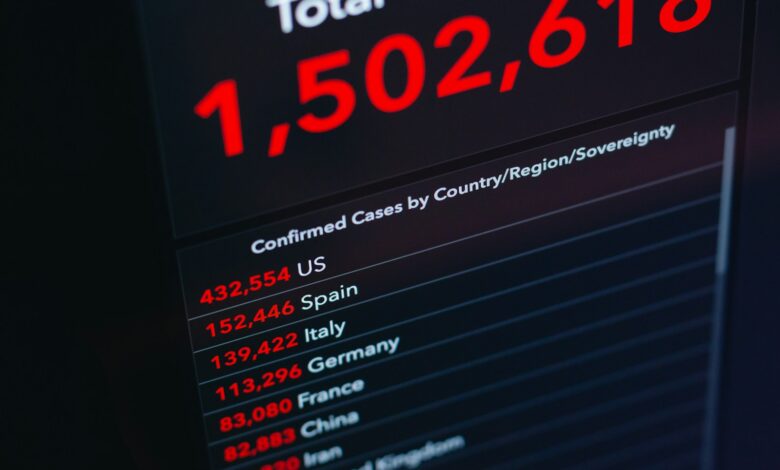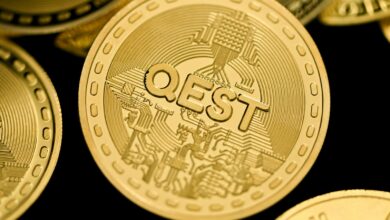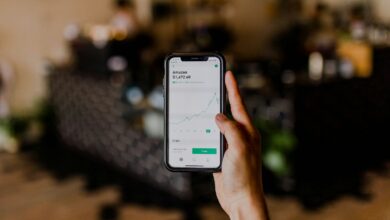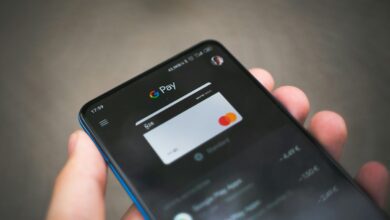Digital commodities – tokenized physical assets

Utilizing blockchain technology to create digitized proxies for tangible goods such as oil and gold enhances liquidity and accessibility in global markets. By converting these traditional resources into cryptographic tokens, investors gain fractional ownership and seamless transferability without the need for direct custody or complex logistics.
The process involves certifying the underlying tangible holdings through rigorous auditing and secure storage solutions, ensuring each token corresponds accurately to a measurable quantity of the original good. This approach mitigates counterparty risk while preserving the intrinsic value tied to real-world substances.
Market data indicates that token-based representations of metals like gold have achieved substantial trading volumes on decentralized exchanges, reflecting growing confidence among institutional participants. Similarly, energy commodities represented in this manner offer new avenues for portfolio diversification with enhanced transparency and reduced settlement times.
Digital commodities: tokenized physical assets [Digital Finance digital-finance]
Investors seeking exposure to traditional stores of value such as gold and silver now benefit from blockchain-based representations that facilitate fractional ownership, increased liquidity, and streamlined transferability. These innovative instruments mirror the underlying metal reserves held in secure vaults, allowing participants to transact without the logistical complexities associated with direct custody or delivery. This method significantly reduces barriers for retail and institutional players aiming to diversify their portfolios with precious metals.
Energy resources like oil have similarly been integrated into blockchain frameworks, offering a new paradigm for trading and settlement. By issuing tokens backed by verified quantities of crude oil stored at certified locations, market participants gain transparent access to commodities markets with enhanced traceability and reduced counterparty risk. Such mechanisms align with regulatory standards through smart contracts that enforce compliance automatically while ensuring auditability.
Mechanics and advantages of blockchain representations
The core principle involves linking each unit of a digital representation to a defined quantity of a tangible good stored under stringent conditions. For example, a single token might correspond to one gram of gold or a barrel of oil, verified through third-party custodianship. Blockchain technology ensures immutability of ownership records and facilitates instantaneous settlements globally, bypassing traditional intermediaries like brokers or clearinghouses.
These instruments provide significant benefits:
- Improved liquidity: Fractionalization enables smaller investors to participate in markets historically dominated by large players due to high minimum investment sizes.
- Cost efficiency: Reduced reliance on physical handling decreases storage fees and insurance costs.
- Enhanced transparency: Real-time ledger updates provide clear provenance tracking and reduce fraud risks.
The evolution of these products continues alongside advances in regulatory clarity, which varies regionally but increasingly supports their integration into mainstream financial systems. For instance, jurisdictions with established frameworks for custodial oversight encourage broader adoption among institutional clients seeking compliance assurance.
The strategic deployment of such instruments necessitates rigorous verification protocols including third-party attestation, periodic inventory reconciliations, and cryptographic proof-of-reserve disclosures. Market participants must evaluate providers based on these criteria alongside technological robustness to mitigate counterparty exposure effectively.
A forward-looking perspective suggests further convergence between commodity-backed tokens and decentralized finance ecosystems will enhance accessibility while promoting efficient capital allocation across global markets. Continuous improvements in interoperability standards and scalability solutions will underpin future growth trajectories as demand expands beyond precious metals into broader resource categories.
Legal frameworks for tokenized assets
Regulatory clarity regarding the representation of commodities such as gold, silver, and oil in blockchain-based formats remains a critical factor for institutional adoption. Jurisdictions that treat these representations as securities impose stringent compliance requirements including KYC/AML protocols, custody regulations, and disclosure obligations. Conversely, some regulators categorize them under commodity derivatives or property rights frameworks, which affects how ownership is legally recognized and transferred.
For instance, the U.S. Securities and Exchange Commission (SEC) often evaluates whether a particular digital instrument qualifies as a security under the Howey Test. This influences whether offerings tied to physical metals or energy resources must undergo registration or qualify for exemptions. The Commodity Futures Trading Commission (CFTC), on the other hand, governs futures contracts linked to underlying tangible goods like oil and precious metals but has limited jurisdiction over direct ownership tokens unless they mimic derivative structures.
Global regulatory approaches and case studies
The Swiss Financial Market Supervisory Authority (FINMA) provides a nuanced classification system separating payment tokens, utility tokens, and asset-representing tokens. Tokens backed by physical stores of silver or gold are treated akin to collective investment schemes if they confer profit rights, triggering specific fund management laws. This approach ensures investor protection while facilitating market innovation through clear operational guidelines.
In Singapore, the Monetary Authority employs a flexible framework where representations of commodities are regulated depending on their function–whether serving as payment instruments or investment vehicles. Regulatory sandboxes have allowed experiments with crude oil-backed digital units that enable fractional ownership with transparent provenance via blockchain audits. Such initiatives demonstrate how legal frameworks can adapt to incorporate novel financial products without compromising market integrity.
A comparative analysis reveals that European Union directives currently emphasize anti-money laundering compliance for tokenized representations of tangible resources but lack uniform treatment concerning property rights transfer mechanisms. Germany’s BaFin requires custodians holding physical reserves–such as gold bars–to maintain stringent audit trails while permitting issuance of corresponding ledger entries representing client holdings. This integration enhances trust in hybrid models combining traditional warehousing with cryptographic proof-of-ownership.
The interplay between property law and electronic registries further complicates regulatory landscapes for resource-backed ledger entries. Jurisdictions differ in recognizing blockchain records as conclusive evidence of title versus merely supplementary documentation requiring parallel paper deeds. This divergence impacts enforceability in dispute resolution scenarios involving silver or oil representations held via distributed ledgers.
An effective legal environment encourages transparent custody solutions integrating real-time auditing technologies alongside smart contract enforcement of transfer conditions. Market participants benefit from standardized protocols ensuring that each unit corresponds directly to an identifiable quantity of stored gold or barrels of crude oil. Ongoing dialogue between technologists, legal experts, and regulators is essential to refine these frameworks so they reflect both technological capabilities and economic realities accurately.
Valuation Methods for Tokenized Representations of Commodities
For valuing tokenized representations of natural resources such as oil or precious metals like gold, market-driven pricing remains the cornerstone. Spot prices from established exchanges–NYMEX for oil and LBMA for gold–serve as primary reference points. These benchmarks reflect real-time supply and demand dynamics, liquidity levels, and geopolitical influences. Adjustments must account for storage costs, transportation fees, and insurance premiums embedded within the token’s economic model to bridge differences between underlying material ownership and its blockchain proxy.
Another effective approach involves discounted cash flow (DCF) analysis when tokens represent future production rights or revenue streams tied to commodity extraction or refining. This method requires accurate forecasting of output volumes, operational expenses, and commodity price trajectories over contract duration. Sensitivity analyses around key variables enhance robustness given high volatility in energy markets or fluctuations in gold reserves’ yield rates documented by mining firms. Incorporating risk-adjusted discount rates aligned with sector-specific cost of capital improves valuation precision.
Comparative Valuation Techniques and Risk Metrics
Relative valuation leverages multiples derived from comparable assets traded publicly or on secondary digital platforms. Price-to-book ratios of mining companies or futures contracts on crude oil provide proxies for evaluating blockchain-based instruments representing these goods. Liquidity premiums or discounts often emerge due to differences in tradability and custody mechanisms inherent in cryptographic tokens versus conventional holdings. Incorporating Value at Risk (VaR) models tailored to volatility profiles observed in commodities markets offers additional insights into downside exposure linked to token ownership.
Furthermore, integrating regulatory frameworks and evolving compliance standards impacts appraisal outcomes significantly. Jurisdictional variations affecting asset transferability, taxation policies on virtual ownership, and environmental regulations tied to resource extraction impose constraints that can depress valuations relative to spot market benchmarks. Monitoring shifts in global supply chains, OPEC decisions for oil output quotas, or central bank gold reserve adjustments provides forward-looking indicators critical for dynamic reassessments of value embedded in tokenized formats.
Custody Solutions for Tokenized Representations of Physical Commodities
Reliable custody mechanisms are paramount for ensuring the integrity and trustworthiness of tokens backed by tangible goods such as gold, silver, and oil. Physical storage facilities must adhere to stringent security protocols, including multi-layered access controls, surveillance systems, and insurance coverage that matches or exceeds the asset value. For example, vaults operated by established entities like Brinks or Loomis provide certified safekeeping services for precious metals, ensuring that each digital token corresponds to a verifiable unit of bullion.
Beyond traditional vaulting, custody providers integrate advanced tracking technologies such as RFID tagging and blockchain-based provenance records to prevent fraud and misplacement. In cases involving oil reserves stored in designated tanks or barrels, IoT sensors measure volume and quality parameters continuously, offering real-time data feeds to token holders. This approach enhances transparency while bridging the gap between physical inventory and its electronic representation.
Key Custody Models and Their Applications
Several custody frameworks exist for securing tangible goods linked to their electronic counterparts. The most prevalent include:
- Direct Custody: Operators hold physical commodities in secured warehouses with audit trails accessible via blockchain ledgers. This model is common for precious metals like gold and silver due to their standardized form and ease of storage.
- Third-Party Custodianship: Independent firms specialize in safeguarding assets on behalf of token issuers, offering segregated accounts that reduce counterparty risk. Such services are frequently employed in managing oil-backed tokens where bulk storage complicates direct ownership claims.
- Synthetic Collateralization: Some platforms utilize derivatives or pooled asset holdings as collateral rather than individual physical units. While this increases liquidity, it requires robust regulatory oversight to maintain alignment with actual commodity reserves.
The choice among these models depends on factors such as asset liquidity, market demand volatility, and jurisdictional compliance requirements. For instance, silver’s lower per-unit cost relative to gold allows more flexible storage solutions but necessitates larger inventories under custody.
An effective custody solution also mandates periodic third-party audits that reconcile token supply with underlying inventories. Blockchain-enabled proof-of-reserve protocols enhance accountability by making audit results publicly verifiable without compromising operational security. Case studies from platforms handling gold-linked tokens demonstrate how multi-signature wallets combined with insured vaulting create a hybrid model balancing decentralization and asset protection.
Regulatory landscapes influence custody arrangements significantly; compliance with anti-money laundering (AML) policies and know-your-customer (KYC) standards ensures legitimacy across jurisdictions. Emerging frameworks particularly emphasize transparent chain-of-custody documentation for energy-related goods like crude oil to mitigate risks associated with commodity fraud or misrepresentation within electronic registries.
Use Cases in Commodity Trading
Adopting token representations of conventional goods enhances liquidity and transparency in commodity exchanges. For instance, the integration of blockchain-based tokens linked to crude oil facilitates fractional ownership, enabling a broader range of participants to engage without the burdensome requirements of physical delivery. This fractional approach reduces entry barriers and optimizes capital allocation within energy markets.
Precious metals such as gold and silver have seen increased utilization through token-linked contracts that mirror underlying reserves stored in secure vaults. These tokens provide verifiable proof of ownership while streamlining settlement processes, minimizing counterparty risks inherent in traditional custody arrangements. Market participants benefit from near-instantaneous transfer capabilities combined with immutable audit trails.
Technical Advantages and Market Implications
The adoption of cryptographically secured tokens tied to tangible goods offers significant improvements in operational efficiency by automating compliance and enhancing traceability across supply chains. Smart contract protocols can enforce trade terms automatically, reducing disputes and reconciliation costs. For example, oil trading platforms leveraging tokenized representations enable real-time tracking of cargo provenance and quality certifications, increasing market confidence.
Regulatory frameworks are evolving to accommodate these innovations, with jurisdictions implementing guidelines for asset-backed token issuance. This regulatory clarity incentivizes institutional investors by offering legally recognized claims on underlying commodities. Additionally, standardized token specifications facilitate interoperability among diverse trading systems, promoting cross-border transactions with reduced friction.
- Enhanced price discovery mechanisms via decentralized order books
- Increased market accessibility for smaller investors through fractionalization
- Reduced settlement times compared to traditional clearinghouses
- Improved auditability ensuring compliance with anti-money laundering (AML) standards
Case studies demonstrate the efficacy of this technology: a major European energy trader reported a 30% reduction in transaction costs after adopting token-based instruments for crude oil deals. Similarly, bullion dealers employing silver-linked tokens recorded a 25% increase in trading volumes due to streamlined custody verification processes. Such empirical evidence underscores the transformative potential embedded within token-enabled market infrastructures.
Risks and Compliance Challenges in Tokenized Representations of Oil and Silver
Regulatory clarity remains the foremost barrier to widespread adoption of token-based representations of oil and silver, demanding immediate alignment between jurisdictional frameworks and technological protocols. Without uniform standards for custody, provenance verification, and transfer restrictions, market participants expose themselves to legal ambiguities that can undermine the legitimacy of these instrumented commodities.
Operational risks tied to the bridging mechanisms between tangible reserves and their electronic counterparts necessitate robust auditability and tamper-evident ledger solutions. Failure to implement comprehensive oracle designs or secure multi-party computation layers increases vulnerability to manipulation or erroneous settlement, threatening asset integrity across exchanges.
Strategic Implications and Future Directions
- Enhanced Regulatory Integration: Emerging frameworks should mandate transparent reconciliation processes linking blockchain records with verified storage facilities holding oil barrels or silver ingots. This reduces counterparty risk by enforcing traceability from origin to end-user.
- Technological Safeguards: Adoption of zero-knowledge proofs could enable compliance checks without compromising confidentiality, addressing AML/KYC concerns while preserving transactional privacy among stakeholders.
- Cross-Border Harmonization: Divergent compliance regimes currently fragment markets; coordinated international protocols are essential for creating interoperable token ecosystems that accommodate complex supply chain dynamics inherent to these resources.
- Market Liquidity Considerations: Incorporating fractional ownership models with programmable smart contracts can stimulate secondary trading volumes but introduces additional layers where regulatory oversight must adapt swiftly.
The trajectory towards integrating fungible energy products like oil with cryptographically secured tokens will hinge on reconciling physical commodity characteristics–storage costs, delivery schedules–with instantaneous ledger finality. Similarly, digitizing precious metals such as silver demands rigorous provenance validation paired with adaptive compliance tools that anticipate regulatory evolution rather than react retroactively.
A proactive approach combining advanced cryptographic assurances, standardized legal frameworks, and innovative custody solutions will transform how markets perceive these electronic proxies. Institutional investors seeking exposure must question not only the transparency of representation but also the resilience against systemic risks introduced by converging analog assets with decentralized infrastructures.






